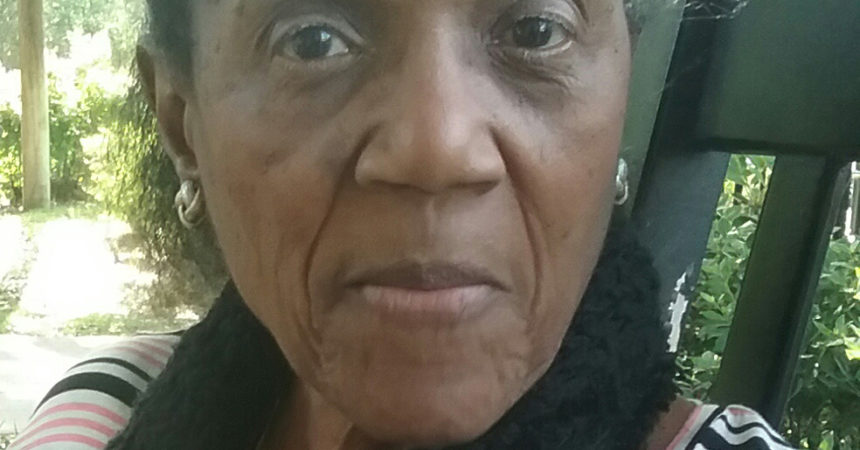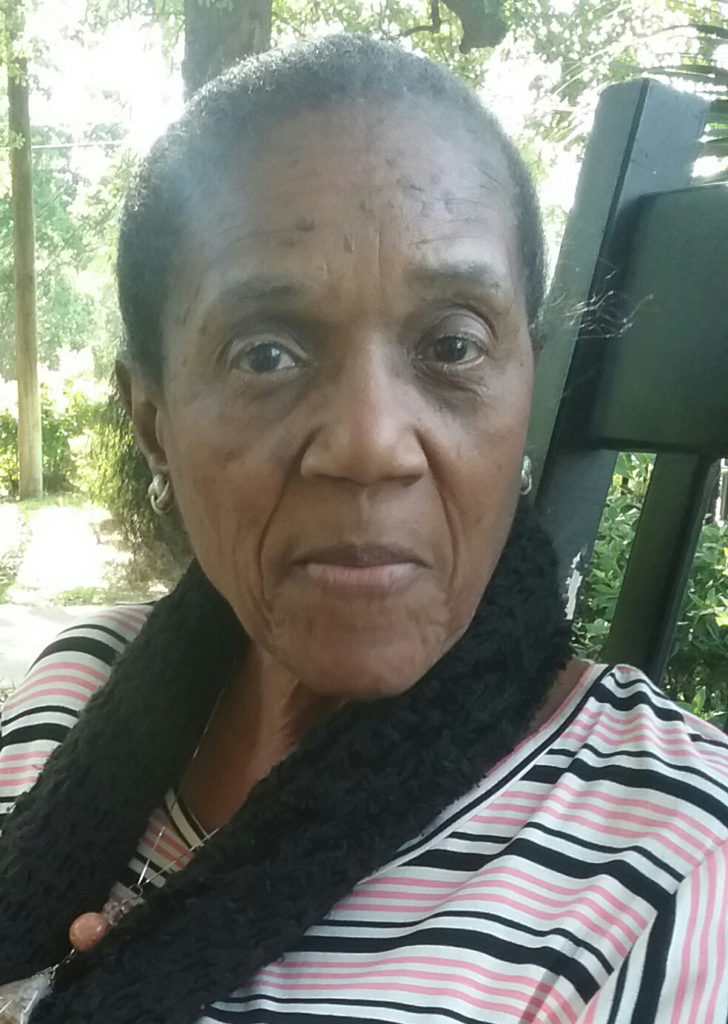
Barnes driven to prevent loss of historic landmarks
RESTORING HISTORY

Althemese Barnes has received several accolades for her work, including being named to the National Museum and Library Services Board by former President Barack Obama. Photo by St. Clair Murraine
By St. Clair Murraine
Outlook staff writer
Some of the graves were eroded by time, thick vines hung from overgrown trees and weeds ran wild over the landscape in one of the few places where Blacks were once buried.
As disturbing as the site was to Althemese Barnes, nothing tore her up like the thought of what was left abandoned in the Greenwood Cemetery.
“Here is this place where all of our seniors are resting; those who taught us in school, Sunday school, our mothers, our fathers and we have them in this kind of condition,” Barnes said. “It was all grown up and you would think it was a forest.
“We don’t need to forget these people.”
At least not under Barnes’ watch. She went to work, joining a group that was assembled at her church. They raised money and set seven consecutive weekends for the graveyard clean up.
Barnes called on every available resource while working in the background. She still smiles a little more than a decade later at what transpired during the first clean up day.
“At about 6:30 that morning, over the hill came James Ford (former mayor) with his Bush Hog, Frank Williams on his Bush Hog and Cornelius Speed with a truck full of boys from FAMU,” she said. “The cemetery was full of people.”
Chief circuit judge George Reynolds was so impressed with the effort that he made assisting with the clean up part of sentencing for some offenders.
Today, Greenwood Cemetery is in the U.S. National Register of Historic Places.
Saving and restoring historic buildings and other landmarks relevant to Black History has become Barnes’ mission. Her interest was sporadic until she retired from state government in 1995.
A year later, she embarked on restoring the home of philanthropist John J. Riley. It has since become a museum that sits in the same place on East Jefferson Street, where it was built as part of the Smokey Hollow community.
Barnes has been the driving force behind several other Smokey Hollow projects, including restoration of a barber shop that was the last remaining commercial building in the once thriving Black community. The barber shop was recently added to a commemorative village on the corner of Franklin Boulevard and Meridian Street.
Barnes, executive director of the Riley House Museum, has gotten national attention for her work, including being named to the National Museum and Library Services Board by former President Barack Obama. But those who know her say her work isn’t about the accolades.
“It’s innate. It’s her passion,” said Aron Myers, a FSU marketing and communication personnel for the division of student affairs. “It’s second-nature. It’s what she has been doing for a long period of time.
“She realizes the importance of preserving history for future generations so we can learn and grow from them; those stories, those narratives, those lives, those histories. She realizes the importance of it for all of us.”
Whatever building or landmark that Barnes can’t save, is well documented in her log and she’s pushed others to do the same in the state. She organized the Florida African American Heritage Preservation Network, a professional museum association, to help drive the effort of preserving history.
“That’s why her voice is so essential,” said Myers. “Without her work and what she is doing now to preserve those stories, it could be lost forever. Imagine what we would lose as a culture, as a society if we don’t have those histories to learn from.”
Admittedly, Barnes isn’t too sure what inspired her in the first place, suggesting that the impetus might have been the large family that she grew up in. She is one of nine children who grew up in Griffin Heights.
Every weekend meant visiting family members outside of Tallahassee, she said. She was especially attracted to the elders in the family and became increasingly curious about them and came to a conclusion that she said had something to do with her mission.
“We needed to look out for them just like they looked out for us,” she said.
It became more, as her passion for preservation grew. She developed a reputation for staying on mission. Take for example when she got involved with the Riley House restoration.
When the city was making plans to demolish the house to make room for a utility transfer station, she called on some of her friends to push forward with bringing the house back from ruin.
She recalled the floor being rotted out and the roof leaked. She called on former commissioner Anita Davis and Dorothy Johnson, who at the time was mayor.
Johnson appropriated $10,000 from the city’s contingency funds, while Davis lobbied wherever she could. Barnes wrote a grant request and received funding to begin refurbishing the house to the showcase that it has become.
Barnes recruits new members to become part of the Riley House Foundation. It’s not so much about her legacy as a historian, she said, but about making sure that the work she’s started is carried on by the next generation.
“All we can do is open the doors,” Barnes said. “Riley (House) has had over 70 interns from FAMU (and) FSU. They are out there now in different roles from teaching to the Smithsonian.”
Barnes is on the right path, Myers said.
“When you look at some of the things facing some of the younger people in our communities it’s because they don’t have those histories that would direct and guide them,” he said. “A lot of those issues, we have dealt with before. It’s just a matter of us letting them know that those issues they struggle with a lot of people got through them with fewer resources.”







